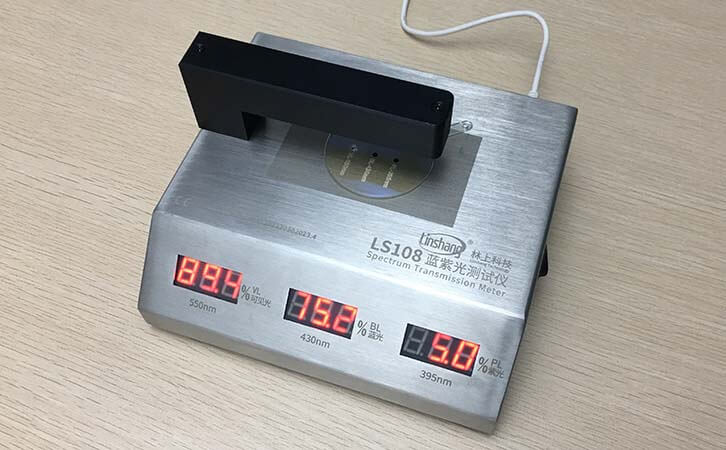Influence of Light Transmittance on Lens | Spectrum Transmission Meter
In the summer, people like to wear sunglasses when going out. It is also necessary for drivers to wear sunglasses when driving during the day. The factor that directly affects the effect of lens shading is light transmittance. Most of the low light transmittance are dark lenses, such as brown, black, etc., which can greatly block the strong light and also block the discomfort caused by ultraviolet rays directly on the skin. There are also a variety of UV-resistant products developed based on this principle, such as new-type UV umbrellas. Light-colored sunglasses generally have low light transmittance, only to avoid direct ultraviolet radiation, but maintain a brighter range of sight. So how are lenses with different transmittances produced and how to identify different transmittances? This requires the use of a professional instrument for detecting transmittance- spectrum transmission meter.
Lenses with different transmittances are produced to meet the needs of different scenes. We know that sunlight is composed of three parts, namely 44% visible light, 53% infrared and 3% ultraviolet. The light transmittance can also directly affect the absorption of ultraviolet rays. Although there are many types of sunglasses and the light transmittances are also very different, there are strict standards for the light transmittance of sunglasses in the production process. According to national standards, lenses with 100% UV absorption must have a function of 100% absorption of ultraviolet light, that is, the average transmittance in the ultraviolet range cannot be greater than 0.5%. It also means the ultraviolet rejection rate must be greater than 99.5%. According to the corresponding standards, during the production of sunglasses, insert the two probes of the spectrum transmission meter into the holder or combine the probes together. After the instrument is self-calibrated, place the measured sample into the slot. Then you can read the light transmittance from the displayed value on the screen.
LS108 Spectrum Transmission Meter
The standard of light transmittance is not fixed. According to the national standard for visible light transmittance of sunglasses. Sunglasses can be divided into 3 categories, namely light-colored sunglasses with a light transmittance greater than 40%, sunshades with a light transmittance between 8% and 40% and special sunglasses , Its light transmittance is 3% -8%. The national standard does not give a clear range of transmittance for sunglasses suitable for driving. With reference to the EU EN1836 sunglasses standard, sunglasses with a transmittance of less than 8% are not suitable for driving. In fact, the light transmittance is not as low as possible. Too low light transmittance can easily cause the driver to feel fatigue while driving. Psychological depression and relaxation to the outside world have certain hidden dangers in traffic. At the same time, the transmittance is not as high as possible. The excessively high transmittance has little effect on the reflection and absorption of sunlight. When facing strong light, a large area of white flowers will appear in the visual area. It will also affect the glasses. Causes direct injury.
Lenses with different light transmittances can meet the needs of people under different conditions. Although there is no uniform fixed light transmittance standard, in the production of sunglasses. It is necessary to control the reasonable range of light transmittance in combination with the actual situation and combine it with a spectrum transmission meter. Accurate testing can make products that meet industry standards and comfortable for consumers.
- Features of the LS183 UV Transmittance Meter
- Difference between Visible Light Transmission Meter LS183 and LS108H
- Spectacle lens anti-blue light detection---blue-violet light transmittance meter
- Spectrum Transmission Meter for Measuring PC Sheet
- Difference between LS103A and LS183 spectrum transmission meter
- Measuring the Transmittance of a Hemisphere by Plastic Transmittance Meter
